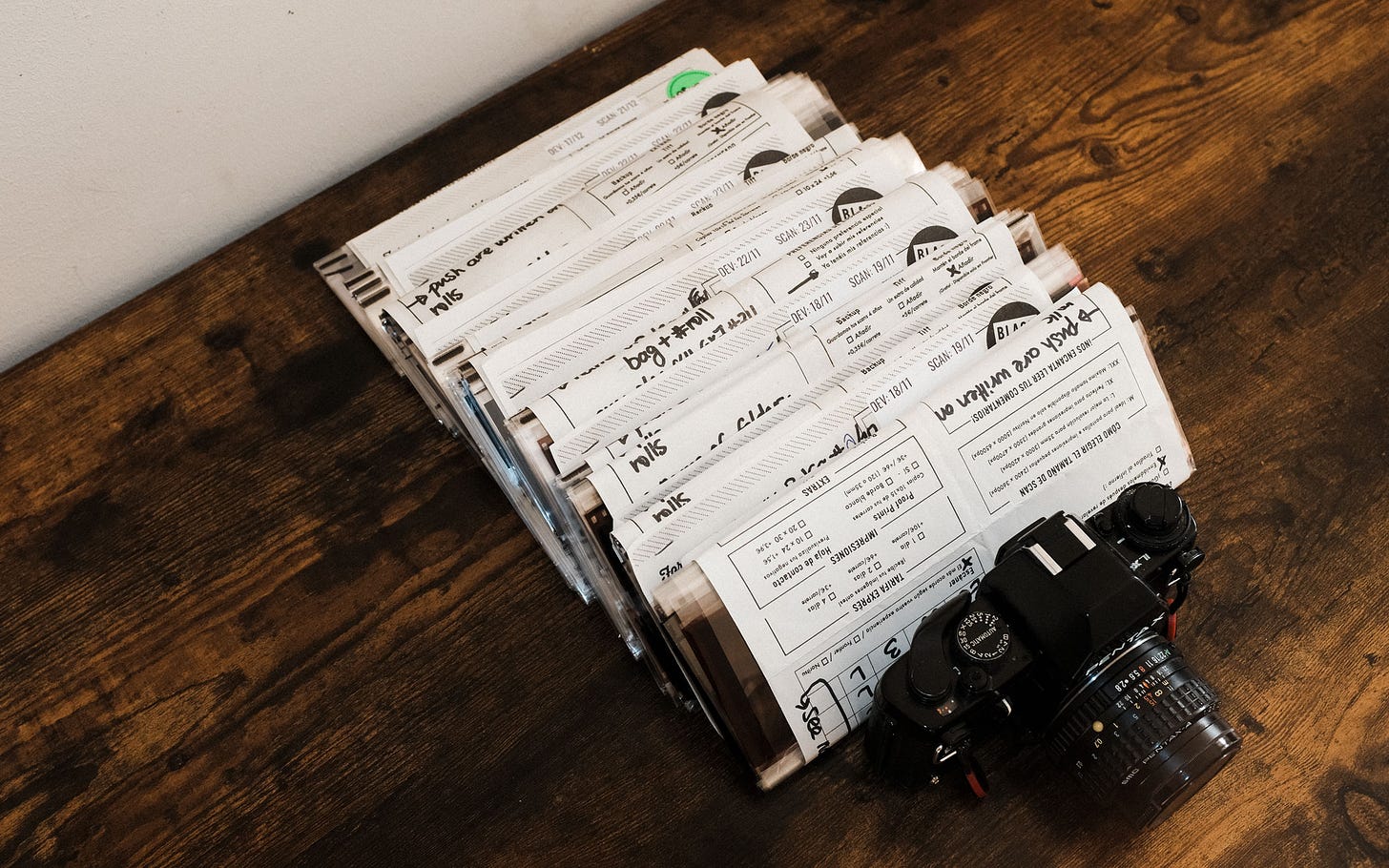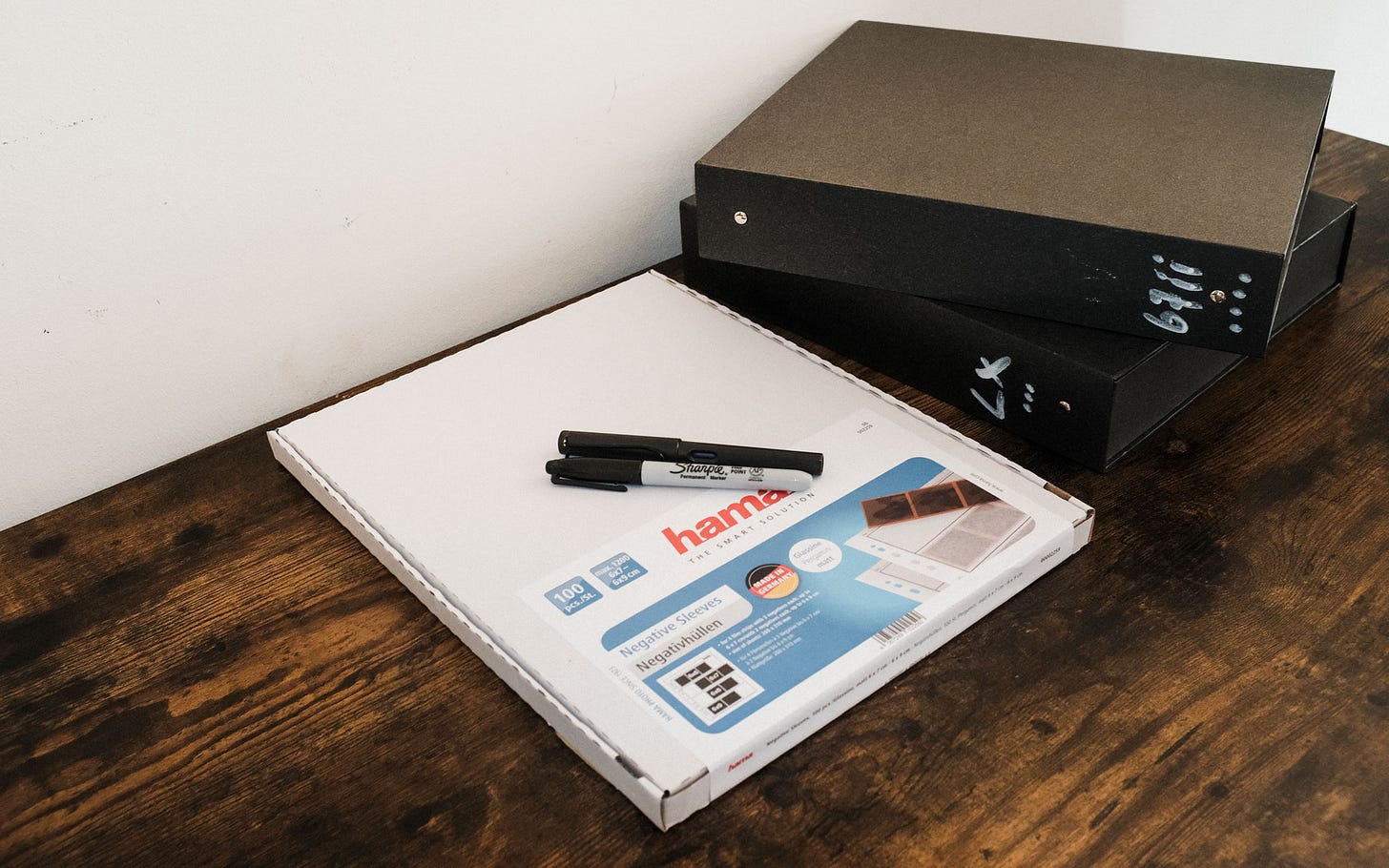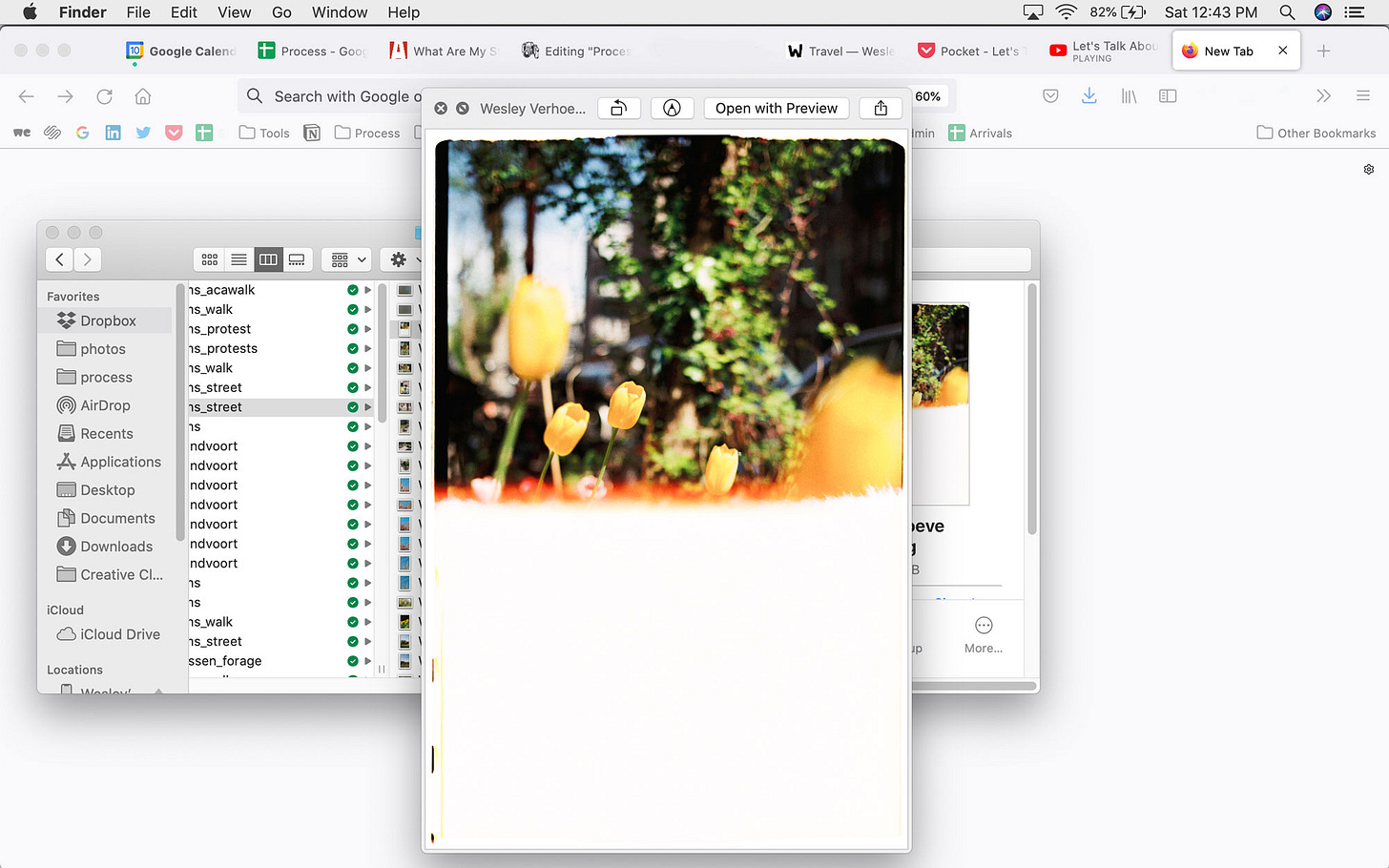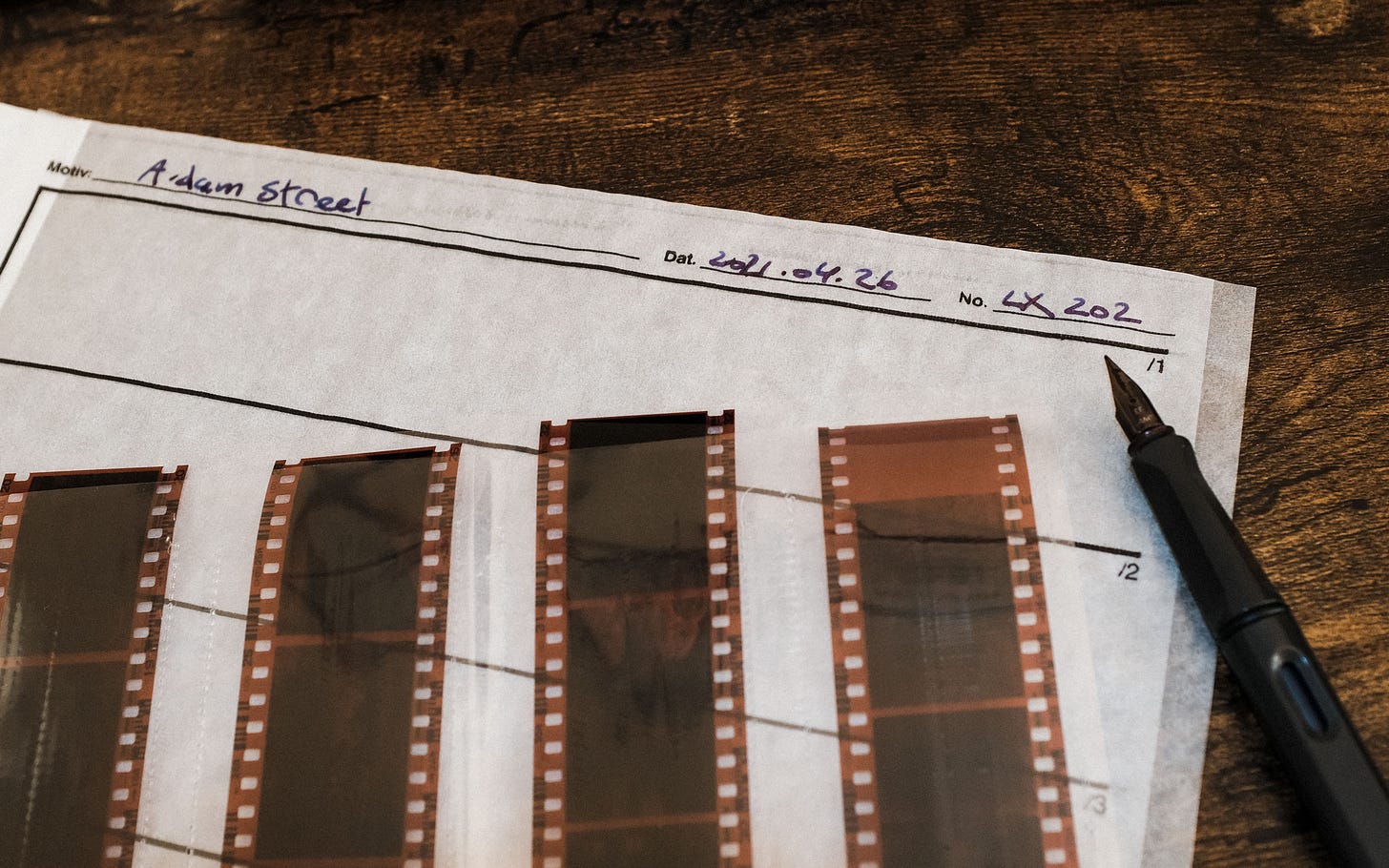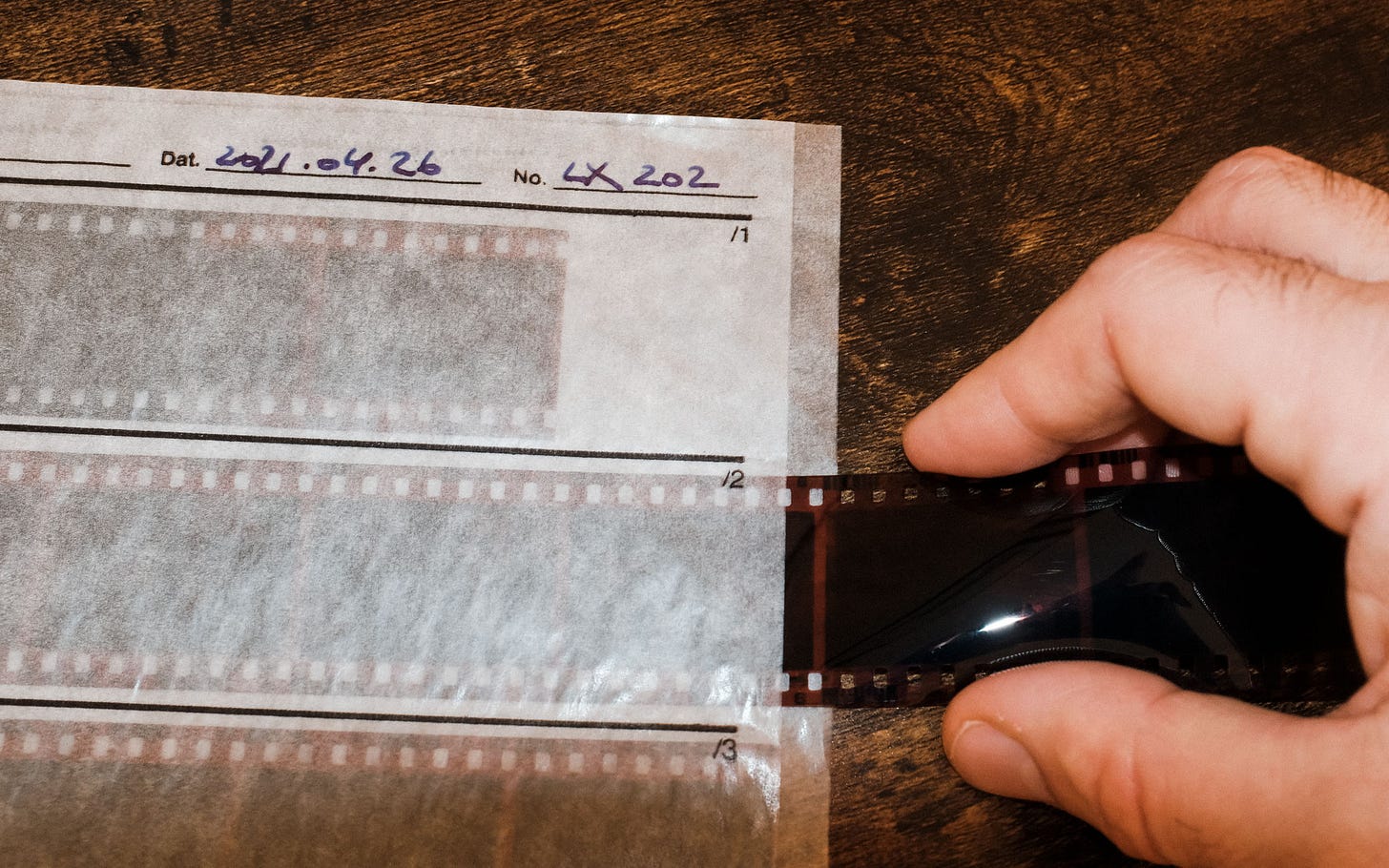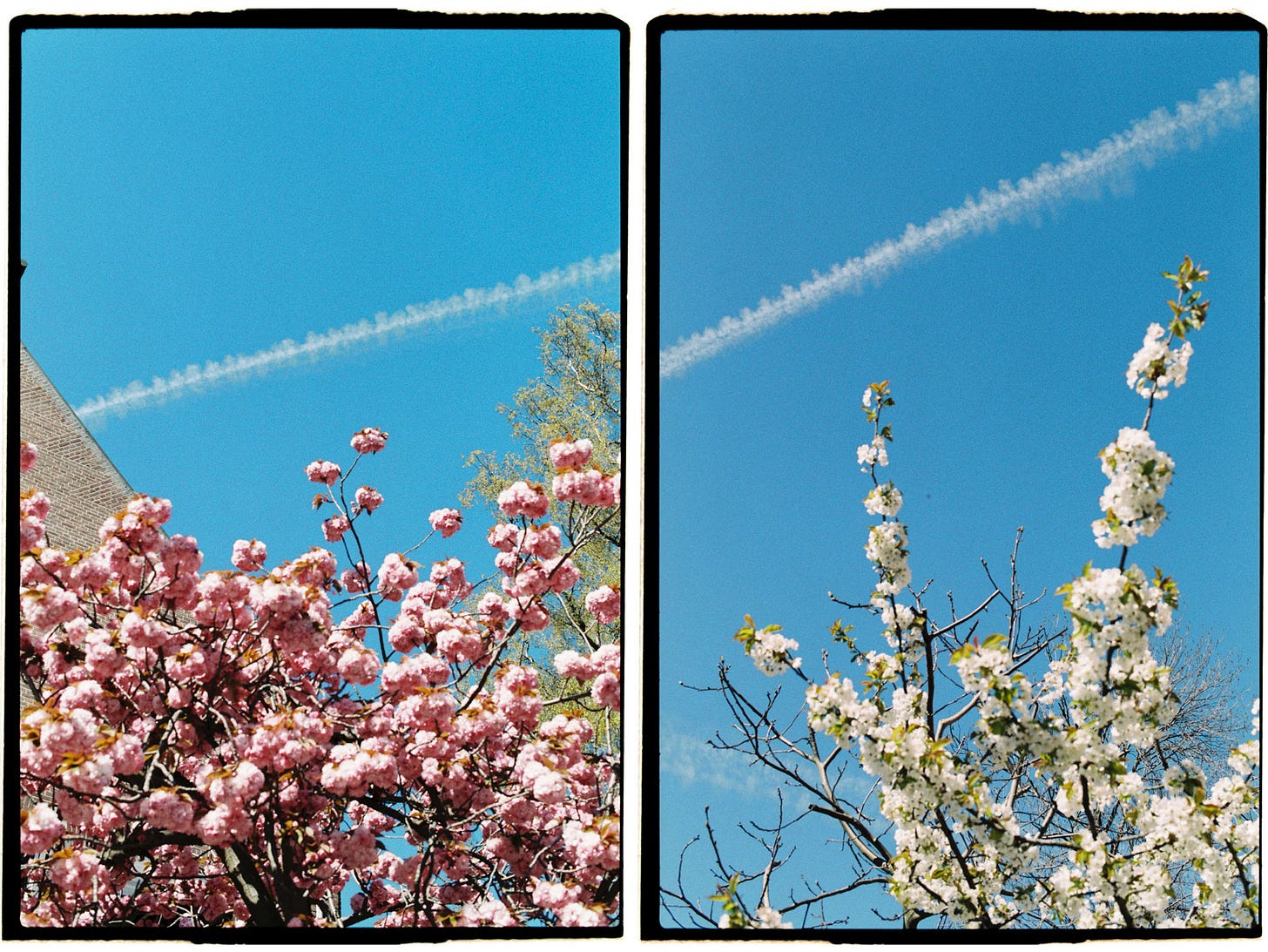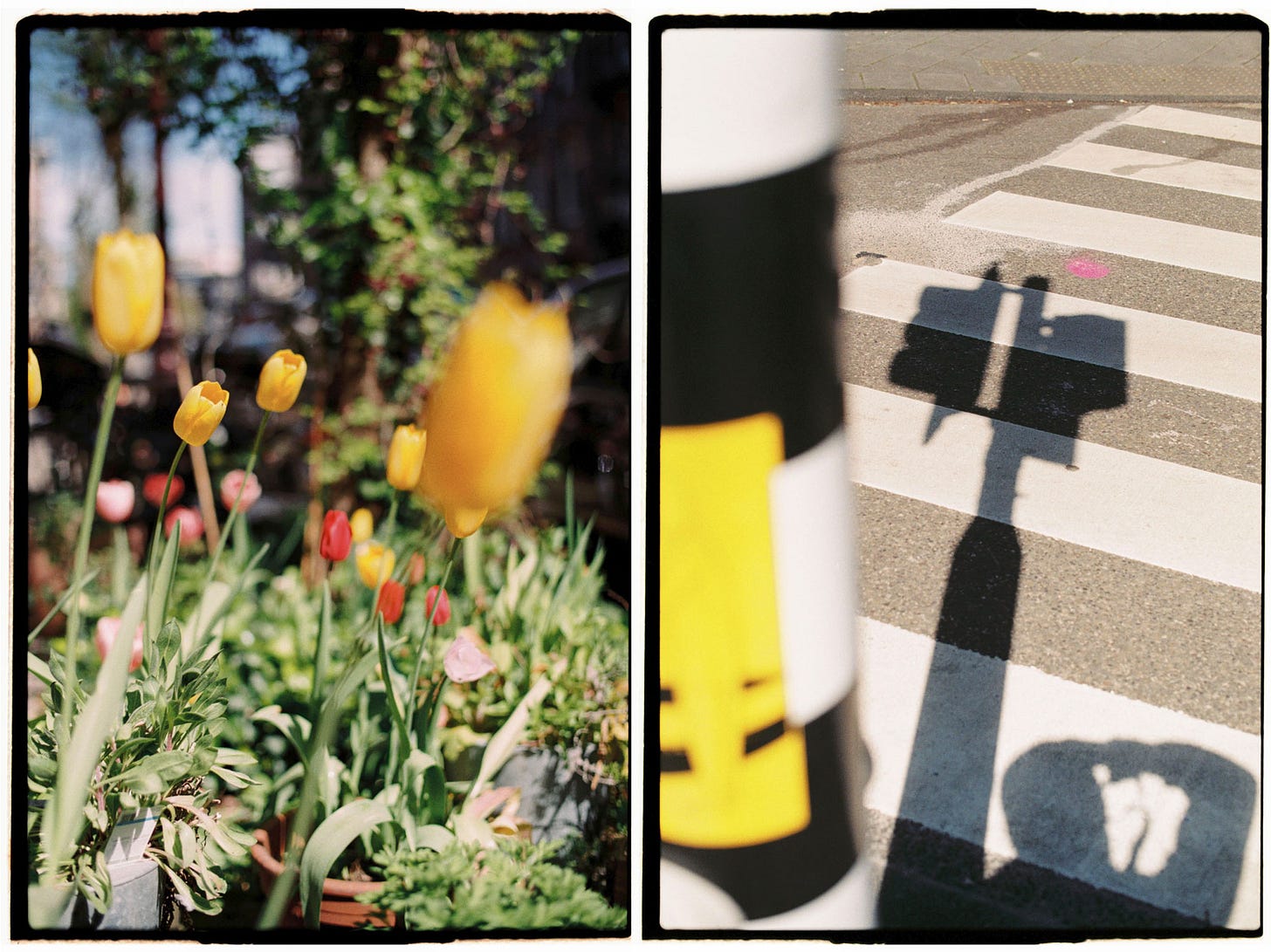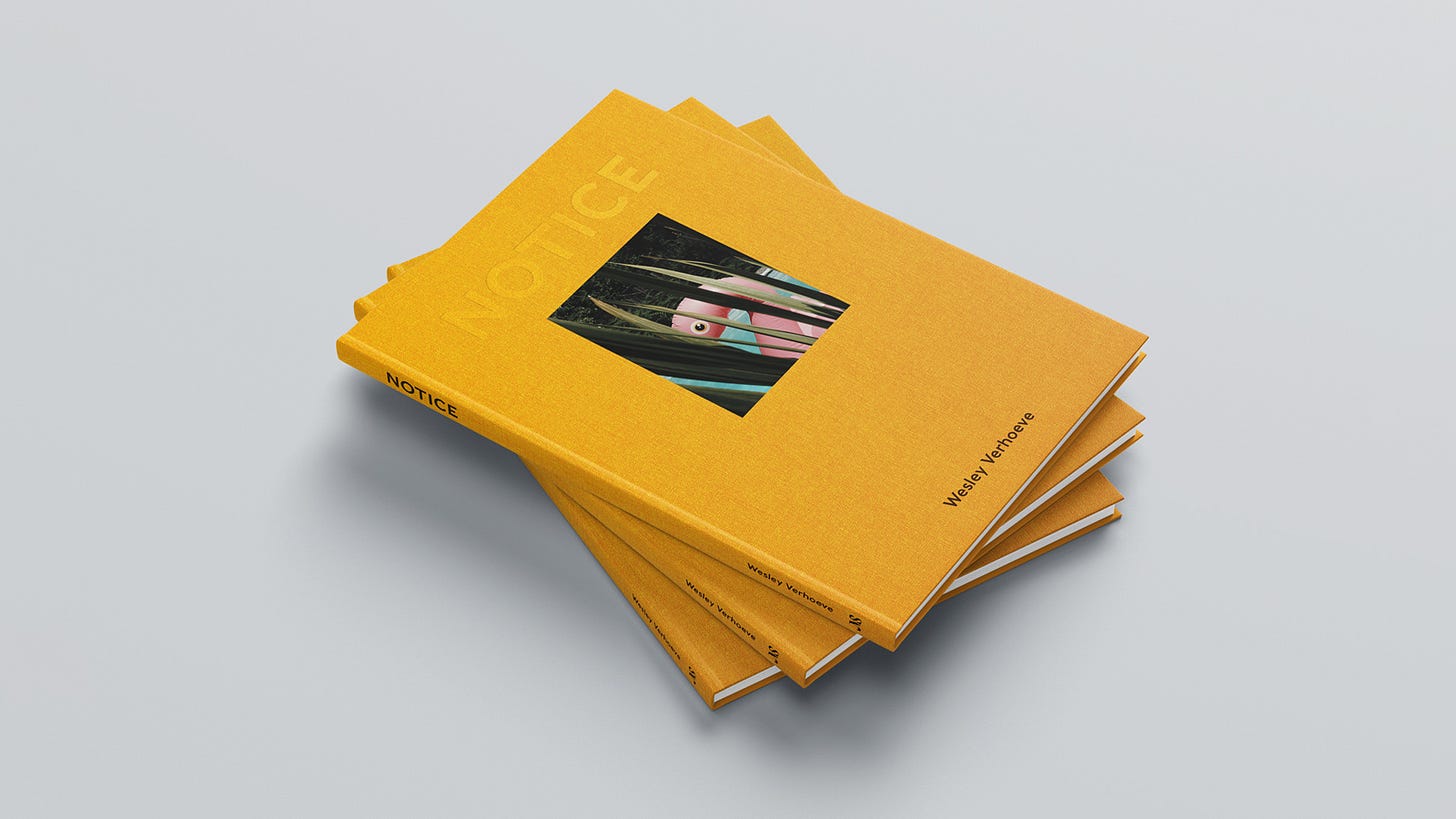048 ☼ How To Archive Your Negatives And Honor Your Work
GIVEAWAY: 3-pack of 500T film courtesy of Analog Amsterdam
Dear friends,
By popular demand this week’s issue breaks down how I organize, archive, and store my negatives. Calmness incoming!
For this week’s giveaway we have 3 rolls of Vision3 500T film courtesy of Tim Verheijen’s newly rebranded shop Analog Amsterdam. This is cinema film not usually available as still film, so get excited.
How To Archive Your Negatives In 7 Steps
In the past few weeks I’ve gotten a lot of requests to share my process for organizing and archiving negatives and your timing was perfect because a big batch just arrived from my friends at Carmencita Film Lab. Look at this sweet sight of fresh negatives!
There are many reasons to keep your negatives organized and at the center of all of them is the belief that your photos matter. Whether you’re a professional or a hobbyist, your work is important. It doesn’t matter whether it’s important to the entire planet or only to your partner or your future child or your family.
Keeping a tidy archive is like making your bed in the morning. It’s a little bit of work up front but it pays off tremendously if you do it consistently. A calm mind, an easily found photo, a chronological time line of your life and photography skills, and a bunch of other things that Future You would be grateful to Today You for.
Sure, you can keep your negatives in the envelope and throw them in a shoebox and you could probably find something if you dig through it for a while, but once again: your work matters, treat it as such.
Let’s get started! Here’s everything we need. A pen, negative binders, and sleeves.
I recently switched from polyethylene sleeves by Printfile to glassine sleeves by Hama. The polyethylene sleeves are transparent which makes it easier to see the negatives, but they’re significantly more expensive and it’s 2022 so I switched.
Hama has been around for nearly 100 years and all my dad’s negatives from the 80’s and 90’s have been stored in these for decades. They’re also a bit lighter in weight, and they have a satisfying sound when you’re leafing through your binder.
For storage I use Ars-Imago ring box binders, which keep away dust and look great on my shelves. My pals at Retro Camera sell them and they fit 100 rolls of film. There are many other options that are fine too. All you really need is any three-ring binder.
I mark the spine with the name of the camera used since that is the top level of my organization. I add dots to indicate which rolls are in that binder. If the spine has one dot, that means it contains rolls 1 through 100. The top binder in the picture above says “67ii ••••” which means it has rolls 300 through 400 shot on the Pentax 67ii.
Let’s grab our first roll from the batch of fresh negatives and get started!
First I take a quick look to see what’s on this roll (see above). Then I consult my roll notes (see the phone screen below) to confirm it was roll 202 shot on the Pentax LX.
Next I cross-reference what I see on the negative with what is in the scan folder for roll 202 to make sure no mistakes were made (see below). These first three steps take maybe one minute combined once you’re well-practiced.
As you may remember from Process issue 012, I am a big proponent of keeping notes for each roll of film, which I do on Apple Notes. These notes are play a key role in an organized archive. If I ever need to find a portrait of a specific person all I have to do is search my roll notes for their name with the Apple search function and it shows me which roll it’s on, which in turn tells me which binder to grab. It’s super fast and easy.
Back to archiving: Now that I’ve determined which roll this sleeve is, I transpose the key information from my roll notes onto the new sleeve (see below). Each sleeve has, from right to left, the shorthand code for the camera (LX = Pentax LX), the roll number (202), the date (2021.04.26), and the theme of the shoot (Amsterdam street photography).
Now we know which roll we’re archiving and we’ve marked up the sleeve it’s time to move the negatives from of their temporary non-archival plastic sleeves into their new forever home (see below).
I am careful to only touch the sides of the negative so I don’t get harmful finger prints all over the negatives. The super legit way is to wear white gloves.
Now it’s time to grab the correct folder, which in this case would be the one marked LX •• since roll 202 lives in the 200-300 range. Once the sleeve is in the binder at right spot chronologically I put the binder back on my shelf and let out a yelp of happiness.
I don’t know about you, but seeing my 2018-2022 negatives organized like this brings me a lot of joy. Almost as much joy as when a client or friend asks for a specific photo and I know for sure I can find it in under one minute. The relief! The calm!
That’s it! Seven easy steps to organize and archive your negatives, and honor your work. Let me repeat one more time that regardless of where you’re at in your photography journey, regardless if you’re doing it just for fun or with a career in mind:
Your photos matter.
Archiving is care-taking and honoring. If you don’t treat your work like it matters and has value, why would anyone else?
If you already have two shoeboxes full of negatives and feel too overwhelmed to get started I understand, but I promise once you get in the groove it moves pretty fast. If you can set aside an hour after eating dinner or a few hours on a weekend you’ll be done before you know it. I love watching photography YouTube videos while I archive. It’s my version of knitting a scarf while watching a movie.
Before you get started make sure to also read the following two issues from the Process archives to get the benefit of this system.
Process 004 — How to Organize and Archive Your Digital Photos (read)
Process 012 — Why Every Photographer Should Keep Roll Notes (read)
If you have any additional questions about this take on organizing and archiving negatives, leave a comment below or hit reply.
Before we wrap up for today, let me share a few of my favorite shots from the roll we just archived. Roll LX202 shot on Fujicolor Industrial 100 in Amsterdam, last spring.
All these images were shot on a Pentax LX, which I wrote about it the previous issue of Process along with my other go-to cameras in various formats.
All film was developed and scanned by my friends at Carmencita Film Lab, unless otherwise noted. Use code “PROCESS” at check out to get a free size upgrade for your scans. They accept film from anywhere in the world and I love working with them. Thank you CFL team!
Alright that’s it for this week! Next week will be all about the joys of shooting a half-frame camera. That’s right, 72 exposures on single roll of film! Luc captured it all on video at Studio 13 and Wim from Silver-hands is preparing the contact sheets.
Keep shooting and take good care of yourselves and others.
Wesley
PS Just out, the third installment of Arrivals, my column for LensCulture, this time about a powerful ongoing project by Sinna Nasseri.
Process Giveaway!
For today’s giveaway I’m bringing back my friend and bulk-roller extraordinaire Tim Verheijen who operates a great online shop where he sells affordable rolls of film.
Today he has made available a nice little three-pack of color film including two rolls of Kodak Vision3 500T and one roll of Kodak Vision3 500T Redscale, both originally produced by Kodak to shoot movies on but bulk-rolled for still photography.
To enter email me at hello@wesley.co with the subject line Process 048 Giveaway before 11pm EST on February 16th and answer the following question:
What was the moment you fell in love with photography? (Describe what happened and how it made you feel)
The winner will be randomly drawn and notified. This giveaway is for Process subscribers only. Subscribe by clicking the button below:
Make sure to show Tim some love on Instagram and check out his Analog Amsterdam online film shop.
If you enjoyed this issue of Process please shared it with your friends on social media.
If you’re a new reader, browse the Process archives here.
Process is a weekly letter from Wesley Verhoeve. If you’d like to support what I do here click the button below to order my new book NOTICE.
Follow along at @wesley.



